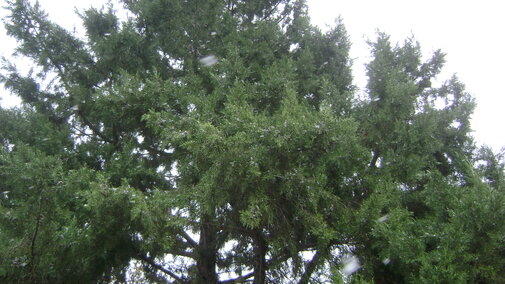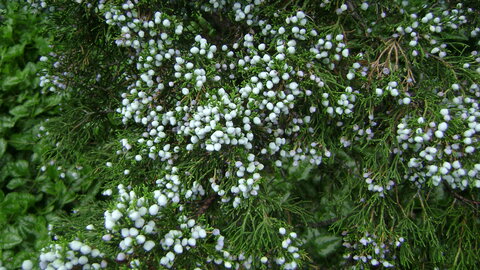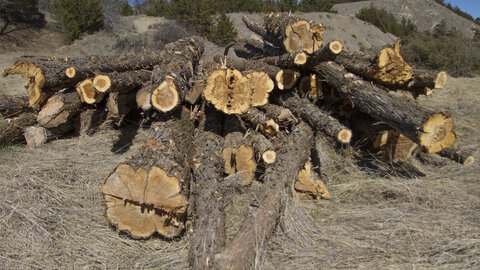Juniperus virginiana
,
Coniferous
Eastern redcedar is a native tree that has long been used in windbreaks, shelterbelts, and conservation plantings across the Great
Plains. Due to lack of management and naturally-occurring wildfires, it has rapidly spread into grasslands and riparian forests. Redcedar
should be used with caution and planted only where needed for quick sheltering or where little else will grow. Management plans/practices
should be in place prior to planting.

Where To Grow
This species has a wide distribution and is found on many types of soil ranging from acid sands to those derived from limestone. It
does best on dry soils in full sunlight but is tolerant of both wet and salty soils. Redcedar grows faster than most other junipers and
is moderately long-lived. Red cedars are often used as ornamentals or as shade trees and, becoming quite attractive as they mature and
reveal their shredded bark. Old farmsteads and cemeteries often include grand old redcedars.
Suitable to plant throughout the state. Plans for long-term management of new seedling growth must be developed.
Size at Maturity
Tree Height
Tree Spread
30-60'
25-35'
Wildlife Benefits
Red cedar and other junipers are important to wildlife throughout the country. Winter food and protection is particularly important for
pheasant, mule deer, and whitetail deer. Their twigs and foliage are eaten extensively by hoofed browsers, but the chief attraction to
wildlife is the bluish-black berry-like fruit. The cedar waxwing is one of the principal users of red cedar berries, but numerous other
birds and mammals, both large and small, make these fruits an important part of their diet. In addition to their wildlife food value,
cedars provide important protective and nesting cover. Chipping sparrows, robins, song sparrows, and mockingbirds use these trees as one
of their favorite nesting sites. Juncos, myrtle warblers, sparrows of various kinds, and other birds use the dense foliage as roosting
cover. In winter, their dense protective shelter is especially valuable.
Utilization
Some redcedar is harvested for saw logs and fence posts. Shavings can be used for livestock and pet bedding. Studies are underway
analyzing redcedar biochar as a soil amendment (improving profile and water capture, retention) and a feed additive for cattle (reducing
methane emissions).
Additional Considerations
Changes in land management over several decades allowed eastern redcedar to escape its typical habitat and move rapidly into grasslands
and riparian forests. The tree still possesses benefits for multi-row or single-row windbreak plantings. However, landowners must plan to
actively manage new seedling growth on their property for the life of the planting.
Related species
Rocky Mountain Juniper (Juniperus
scopulorum).
Interesting Facts
For numerous Native American Tribes, the red cedar tree symbolizes the tree of life and is burned in sweat lodges and in purification
rites. The distilled oil of the red cedar has been officially listed as a reagent in the U.S Pharmacopoeia since 1916.


